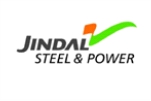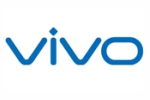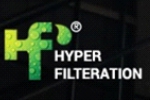



M.Tech in Electrical Vehicle (EV) Engineering is a specialized postgraduate program focused on the design, development, and implementation of electric vehicles and their associated technologies. With the growing emphasis on sustainable transportation and the shift towards electric mobility, this field has gained significant importance in recent years. The field of electric vehicles and associated technologies is rapidly evolving. It's recommended to check with specific universities for the most up-to-date information about their M.Tech in Electrical Vehicle Engineering programs, admission criteria, and curriculum.
1. M.Tech- Electrical Vehicle Engineering for Working Professional is a degree course, recognized by UGC.
2. The program has four semesters adequately designed to nurture the professional with thorough knowledge of engineering subjects where classes are conducted online and with flexibility that is on weekends or after the business hours to suit the requirement of professionals.
3. Online exams are held with exam safety and appropriate assessments are done to evaluate the knowledge level of the candidate.
4. Experienced industry professionals, guest lecturers and renowned faculties take up classes and deliver lectures to make professional understand each and every concept of engineering.
5. The Dissertation enables students to comprehend the course and topics taught and apply in their current professional work.
6. An appropriate Evaluation system is used for assessment of the professionals at regular intervals and propels them to stay connected with the course programs and its application.
7. The students on successfully completion of the Degree Program are awarded with Master Degree in Electrical Vehicle Engineering.
Course Structure
SEMESTER-I?
| Subject Code | Subject | Periods | Credits | ||
| L | T | P | |||
| EVM-101 | Hybrid and Electric Vehicle | 4 | 0 | 0 | 4 |
| EVM-102 | Dynamics and Control of Electric Vehicle | 4 | 0 | 0 | 4 |
| EVM-103 | Automation in Electric Vehicle | 4 | 0 | 0 | 4 |
| EVM-104 | Battery and Charging Technology in Electric Vehicle | 4 | 0 | 0 | 4 |
| EVM-105 | Automation Lab | 0 | 0 | 2 | 1 |
| EVM-106 | Simulation Lab | 0 | 0 | 2 | 1 |
| Total | 16 | 0 | 4 | 18 | |
| Subject Code | Subject | Periods | Credits | ||
| L | T | P | |||
| EVM-201 | Machine Learning | 4 | 0 | 0 | 4 |
| EVM-202 | Electric Drive | 4 | 0 | 0 | 4 |
| EVM-203 | Battery Management System | 4 | 0 | 0 | 4 |
| EVM-204 | Artificial Intelligence | 4 | 0 | 0 | 4 |
| EVM-205 | Battery Management Lab | 0 | 0 | 2 | 1 |
| EVM-206 | Machine Learning Lab | 0 | 0 | 2 | 1 |
| Total | 16 | 0 | 4 | 18 | |
| Subject Code | Subject | Periods | Credits | ||
| L | T | P | |||
| EVM-301 | Computer Integrated Manufacturing | 4 | 0 | 0 | 4 |
| EVM-302 | Computational Intelligence | 4 | 0 | 0 | 4 |
| EVM-303 | Mini Dissertation | 0 | 0 | 20 | 10 |
| Total | 8 | 0 | 20 | 18 | |
SEMESTER-IV
| Subject Code | Subject | Periods | Credits | ||
| L | T | P | |||
| EVM-401 | Major Dissertation | 0 | 0 | 32 | 16 |
| Total | 0 | 0 | 32 | 16 | |
| Departmental Elective -I | ||
| S.No | Subject Code | Subject |
| 1 | EVM-101E | Finite Element Method |
| 3 | EVM-102E | Computational Fluid Dynamics |
| Departmental Elective -II | ||
| S.No | Subject Code | Subject |
| 1 | EVM-201E | CAD for Electric Vehicle |
| 2 | IEM-202E | Modelling and Analysis of Electric Machines |
| Departmental Elective -III | ||
| S.No | Subject Code | Subject |
| 1 | EVM-301E | Probability and Stochastic Processes |
USHA MARTIN UNIVERSITY, RANCHI FACULTY OF ENGINEERING & APPLIED SCIENCES WILP PROGRAM M.TECH SYLLABUS (2023-24) (Department of Mechanical Engineering) (Industrial Engineering & Management Syllabus)
| Subject Name | - | Hybrid and Electric Vehicle | L | T | P | C |
| Subject Code | - | EVM-101 | 4 | 0 | 0 | 4 |
UNIT-I: Introduction to Vehicle Propulsion and Power-train Technologies: History of Vehicle Development, Internal Combustion Engine Vehicles, Vehicles with Alternative Fuels, Power train Technologies, Transmission Systems, Drive train and Differentials. Electric and Hybrid Power-train Technologies: Introduction, Battery Electric Vehicles, Fuel-Cell Electric Vehicles. UNIT-II: Hybrid Electric Vehicles, Plug-in Hybrid Electric Vehicles, Hybrid Hydraulic Vehicles, Pneumatic Hybrid Vehicles, Power/Energy Management Systems. Body and Chassis Technologies and Design: Introduction, General Configuration of Automobiles, Body and Chassis Fundamentals, Different Types of Structural Systems. UNIT-III: Body and Chassis Materials, Specific Considerations in Body and Chassis Design of Electric and Hybrid Electric Vehicles, Chassis Systems of Electric and Hybrid Electric Vehicles. UNIT-IV: Vehicle Dynamics Fundamentals: Concepts and Terminology, Vehicle Kinematics, Tire Mechanics and Modeling, ICE Performance Characteristics, Electric Motor Performance Characteristics. UNIT-V: Battery Performance Characteristics, Transmission and Drive-train Characteristics, Regenerative Braking Characteristics, Driving Cycles. Power-trains Components: Case Study: Introduction, Rechargeable Battery Vehicles, Hybrid Vehicles, Fuel Cell Powered vehicles. REFERENCES:
| Subject Name | - | Dynamics and Control of Electric Vehicle | L | T | P | C |
| Subject Code | - | EVM-102 | 4 | 0 | 0 | 4 |
UNIT -1 Fundamentals of Vehicle Dynamics; Design of Transmission Systems for electric vehicle (EVs); Modeling and Analysis of suspension systems; braking and steering systems for EVs. UNIT -2 Stability and Control of EVs; Vehicle Ride; Tire forces and tire modelling of EVs; BEV/ Hybrid System Engineering, System Engineering, SIL, HIL, Component Sizing and Data Analytic, Software & Hardware Control Strategy, EV/ Architecture ( HV, LV and CAN). UNIT- 3 Functional Safety standard–ISO 26262,Software Validation and Quality; Design and Integration, Vehicle ECU Programming, Mounting and Installation, Thermal Management; Wiring Harness and Architecture, Harness Architecture and Simulation Tools. UNIT-4 HV Harness Design, including Connectors, Fuses, Relays and Sensors, LV Harness design, Intra Vehicle Network Design, EMI / EMC compliance; Energy management within the power train architecture. UNIT-5 Controllers in EVs, Axle transnational controls, gearbox controllers; SW architecture and AUTOSAR; NVH in electric vehicle; Safety systems, FDSS, Isolation monitoring, HVIL; junction boxes, contactors, relays, fuses: selection, design, component sizing; issues in operating HV contactors – pre-charge circuits, diagnostics. REFERENCES:
| Subject Name | - | Automation in Electric Vehicle | L | T | P | C |
| Subject Code | - | EVM-103 | 4 | 0 | 0 | 4 |
UNIT-I: Automotive Embedded System Technology: Overview of Embedded System Categories, Various Embedded Sub Systems like Chassis, Body, Driveline, Engine, Fuel, Emission, Brakes, Suspension, Emission, Brakes, Suspension, Doors, Safety & Security, Comfort & Multimedia, Communication & Lighting and Future Trends in Automotive Embedded Systems: X -by - Wire technologies. Concept to Market: Understanding Automotive Product Design Cycle, Microcontroller, architecture, Memory map, I/O map, Building Blocks of Automotive Electronic Product: Actuators, Sensors, Semiconductor Components, Devices, Integrated Circuits (ICs), Relay, Stepper motor, PCBs etc. UNIT-II: Structure of embedded programme, infinite loop, and compiling, linking and locating, downloading and debugging, Intra processor Communication Protocols: I2C & I2S, SPI & USB, LIN and CAN. Coding Standards and Guidelines: MISHRA C & Automotive Operating System: OSEK/VDX, AUTOSARs. UNIT-III: Sensors :Introduction, Basic Sensor Arrangement, Types of Sensors, Oxygen Sensor, Cranking Sensor, Position Sensor, Engine Oil Pressure Sensor, Linear and Angle Sensor, Flow Sensor, Temperature and Humidity Sensor, Gas Sensor, Speed and Acceleration Sensor, Knock Sensor, Torquet. UNIT-IV: Basics of Networking; Communication Protocols, Sensor Networks, Machine to-Machine Communications, Wireless medium access issues, MAC protocol survey, Survey routing protocols, Sensor deployment & Node discovery, Data aggregation & dissemination. UNIT-V: Sensor Technology, RFID Technology, WPAN Technologies for IoT/ M2M, Cellular and mobile network technologies for IoT/ M2M CoAP, REST, Zigbee, Bluetooth, transport and session layer protocols. REFERENCES:
1stedition, 2009.
| Subject Name | - | Battery and Charging Technology in Electric Vehicle | L | T | P | C |
| Subject Code | - | EVM-104 | 4 | 0 | 0 | 4 |
UNIT-I: Selected energy storage devices and connect with their electric power applications in electric vehicles, energy requirement of vehicles, power requirement of vehicles, sizing of energy storage rating. UNIT-II: Types of batteries Li-Ion, Metal Air Batteries: Aluminum air battery, Zinc air battery, fuel cells, super-capacitors, Hydrogen energy storage. UNIT-III: Fundamental of Battery pack design: Mechanical Design, Thermal Design, Electrical Design. UNIT-IV: Charging Infrastructure, Battery Charging : Types of chargers slow and fast, Battery Swapping, Standardization and On board Chargers, public chargers, bulk chargers, swap stations, economics of public chargers. Unit V: Difference between charging station and charging point; Inductive charging, Flash Charging; Charger protocols, OCPP, V2G, CHADEMO, Bharat Charger; Impact of charging on grid; Renewable energy integration to chargers; Application of IoT to charging infrastructure. REFERENCES:
| Subject Name | - | Machine Learning | L | T | P | C |
| Subject Code | - | EVM-201 | 0 | 0 | 2 | 1 |
UNIT-I: Introduction: History of machine learning, Basic concepts UNIT-II: Supervised learning: Supervised learning setup, LMS, Logistic regression, Perceptron, Back-propagation, neural networks, Exponential family, Generative learning algorithms, Gaussian discriminant analysis, Naive Bayes, Support vector machines, Model selection and feature selection, Ensemble methods: Bagging, boosting. UNIT-III: Learning theory: Bias/variance trade-off, Union and Chernoff/Hoeffding bounds, VC dimension, Worst case (online) learning. UNIT-IV: Unsupervised learning: Clustering K-means, EM. Mixture of Gaussian, Factor analysis, PCA (Principal components analysis), ICA (Independent components analysis). UNIT-V: Miscellaneous topics: Hypothesis testing, cross-validation, quadratic discriminant Analysis, adaptive hierarchical clustering, gradient boosting. REFERENCES:
2.Müller, Andreas C., and Sarah Guido, “Introduction to machine learning with Python: a guide for data scientists”, O’Reilly, 1st edition, 2016l.
| Subject Name | - | Electric Drive | L | T | P | C |
| Subject Code | - | EVM-202 | 4 | 0 | 0 | 4 |
UNIT-I: Fundamental of Electrical Drive: Introduction of Electric Drives, Dynamics of Electric Drives, Four Quadrant Operation, elements of drive system, drive characteristics, criteria for selection of drive components, Equivalent drive parameters, Load equalization, Characteristic of DC Motor. UNIT-II: DC and AC Drives: Motor load dynamics, starting, braking & speed control of dc and ac motors. DC drives: converter and chopper control. AC Drives: Operation of induction and synchronous motors from voltage and current inverters, slip power recovery, pump drives using ac line controller and selfcontrolled synchronous motor drives UNIT-III: Advance Electric Drives: Introduction, Principle of operation of the chopper, Chopper controlled drives, Duty-ratio control, current-limit control, steady state analysis, four quadrant chopper circuit, chopper for inversion/other power devices, mode & input to the chopper, power factor and ripples in motor current Chopper control of separately excited DC motor and DC series motor. UNIT-IV: DC to AC Converter: Classification of inverter, Single phase and three phase inverters operation using BJTs and MOS devices for VSI and CSI, Basic concept of PWM controlled inverter (for AC drives). AC to AC Converter: AC voltage controllers. Single and three-phase Cycle-converter circuits, blocked group operation, circulating current mode operation (for AC drives). UNIT-V: CONTROL OF DRIVES : Performance and stability of variable speed dc, control of effective rotor resistance, recovery of slip energy, variable frequency control of ac motors, Application: ON-Line&OFF-line UPS, SMPS, Electronic Ballast,. REFERENCES:
| Subject Name | - | Battery Management System | L | T | P | C |
| Subject Code | - | EVM-203 | 4 | 0 | 0 | 4 |
UNIT-I: Battery Management system: Introduction Cells & Batteries, Nominal voltage and capacity, C rate, Energy and power, Cells connected in series, Cells connected in parallel, Electrochemical and lithium-ion cells, Rechargeable cell, Charging and Discharging Process, Overcharge and Undercharge, Modes of Charging UNIT-II: Battery Management System Requirement: Introduction and BMS functionality, Battery pack topology, Voltage Sensing, Temperature Sensing, Current Sensing, BMS Functionality, High-voltage contactor control, Isolation sensing, Thermal control, Protection, Communication Interface, Range estimation t. UNIT-III: Battery State of Charge and State of Health Estimation, Cell Balancing: Battery state of charge estimation (SoC), voltage-based methods to estimate SoC, Model-based state estimation, Battery Health Estimation, Lithium-ion aging: Negative electrode, Positive electrode, Cell Balancing, Causes of imbalance, Circuits for balancing s. UNIT-IV: Modelling and Simulation: Equivalent-circuit models (ECMs), Physics-based models (PBMs), Empirical modelling approach, Physics-based modelling approach, Simulating an electric vehicle, Vehicle range calculations, Simulating constant power and voltage, Simulating battery packs. UNIT-V: Design of BMS: Design principles of battery BMS, Effect of distance, load, and force on battery life and BMS, energy balancing with multi-battery system. REFERENCES: 1.V. Pop, H.J. Bergveld, D. Danilov, P.P.L. Regtien, P.H.L Notten, “Battery management systems: Accurate state-of-charge indication for battery-powered applications” Springer Science & Business Media, Vol. 9. 2008.
| Subject Name | - | Artificial Intelligence | L | T | P | C |
| Subject Code | - | EVM-204 | 4 | 0 | 0 | 4 |
UNIT-I: Fundamental issues in intelligent systems: History of artificial intelligence; philosophical questions; fundamental definitions; modeling the world; the role of heuristics. UNIT-II: Search and constraint satisfaction: Problem spaces; brute-force search; bestfirst search; two-player games; constraint satisfaction. UNIT-III: Knowledge representation and reasoning: Formal methods (propositional, predicate logic, first order logic), resolution and unification; Informal methods (frames, scripts), answer extraction; knowledge based systems; logic programming, User interface: Human Computer Interaction, User Interface Components, modules of user interface. UNIT-IV: AI planning systems: Definition and examples of planning systems; planning as search; operator-based planning; propositional planning; planning algorithms. UNIT-V: Reasoning under Uncertainty and Learning: probabilistic reasoning; Bayes theorem; Introduction to neural networks and reinforcement learning; Case based reasoning, analytical reasoning, model based reasoning. REFERENCES:
| Subject Name | - | Computer Integrated Manufacturing | L | T | P | C |
| Subject Code | - | EVM-301 | 4 | 0 | 0 | 4 |
UNIT-I: Manufacturing Process: Introduction to CAD and CAM, Manufacturing Planning and control, CIM concepts, Computerized elements of CIM system, Types of manufacturing, Manufacturing models, Manufacturing Control. UNIT-II: Elements of Automation: Review of automation and control technologies. Material Handling technologies. Data Communication technologies. Automatic Data Acquisition technologies. Database Management technologies. UNIT-III: Various Manufacturing Systems: Group Technology & Cellular Manufacturing Systems, Flexible Manufacturing Systems, Production flow Analysis, Transfer lines, Machine cell design and layout. UNIT-IV: Process Planning: Automated Assembly Systems. Quality Control Systems. Computer-Aided Process Planning. Concurrent Engineering. Production Planning and Control Systems. UNIT-V: Integrated manufacturing Levels of Automation, Lean and Agile Manufacturing. Web-based manufacturing. REFERENCES:
| Subject Name | - | Computational Intelligence | L | T | P | C |
| Subject Code | - | EVM-302 | 4 | 0 | 0 | 4 |
UNIT I Introduction to Computational Intelligence: Intelligence machines, Computational intelligence paradigms, Soft computing constituents and conventional Artificial intelligence, Neuro-Fuzzy and soft computing characteristics. UNIT II Rule-Based Expert Systems and Fuzzy Expert Systems: Rule-based expert systems, Uncertainty management, Fuzzy sets and operations of fuzzy sets, Fuzzy rules and fuzzy inference, Fuzzy expert systems, Case study: fuzzy logic controller for various applications. UNIT III Artificial Neural Networks: Fundamental neuro-computing concepts: artificial neurons, activation functions, Neural network architectures, learning rules, Supervised learning neural networks: multi-layer feed forward neural networks, simple recurrent neural networks, time delay neural networks, supervised learning algorithms, Back propagation algorithm, Radial basis function networks Unsupervised learning neural networks, self-organizing feature maps, Deep neural networks and learning algorithms . UNIT IV Evolutionary techniques: Genetic Algorithm,Evolutionary computation: Chromosomes, fitness functions, and selection mechanisms, Genetic algorithms: crossover and mutation, Genetic programming, Evolution strategies, PSO, ACO, BFO. UNIT V Hybrid Intelligent Systems: Neural expert system, neuro-fuzzy systems, Evolutionary neural network, case study of Neuro-fuzzy based systems. REFERENCES:
| Subject Name | - | Finite Element Method | L | T | P | C |
| Subject Code | - | EVM-211E | 0 | 0 | 2 | 1 |
Unit 1 Introduction: Historical background, basic concept of the finite element method, solving of axial load problem, beam problem, power of FEM. Unit II: Variational methods: calculus of variation, extermination of a function, obtaining the variational form from a differential equation, principle of virtual work, Ritz method, Galerkin Method, Least square method, collocation method, sub domain method, the Rayleigh-Ritz and Galerkin methods. Unit III: Analysis of 1-D problems: formulation by different approaches (direct, potential energy and Galerkin); Derivation of elemental equations and their assembly, solution and its post processing. Applications in heat transfer, fluid mechanics and solid mechanics. Bending of beams, analysis of truss and frame. Unit IV: Analysis of 2-D problems: finite element modelling of single variable problems, triangular and rectangular elements; Applications in heat transfer, fluid mechanics and solid mechanics. Unit V: Numerical considerations: Numerical integration, error analysis, mesh refinement. Plane stress and plane strain problems, gradient estimation, Bending of plates, Eigen value and time dependent problems; Discussion about preprocessors. REFERENCES:
| Subject Name | - | Computational Fluid Dynamics | L | T | P | C |
| Subject Code | - | EVM-102E | 0 | 0 | 2 | 1 |
Unit 1: Basic equations of Fluid Dynamics: General form of a conservation law; Equation of mass conservation; Conservation law of momentum; Conservation equation of energy. The dynamic levels of approximation. Mathematical nature of PDEs and flow equations. Unit II: Basic Discretization techniques: Finite Difference Method (FDM); Analysis and Application of Numerical Schemes: Consistency; Stability; Convergence; Fourier or von Neumann stability analysis; Modified equation; Application of FDM to wave, Heat, Laplace and Burgers equations. Unit III: Integration methods for systems of ODEs: Linear multi-step methods; Predictor-corrector schemes; ADI methods; The Runge-Kutta schemes. Vorticity-stream function formulation. Unit IV: Incompressible Navier-Stokes equations: Solution of Navier-Stokes equations using MAC algorithm. The Finite Volume Method (FVM) and conservative discretization. Numerical solution of the incompressible flow. Unit V: Formulation of Navier-Stokes equations: Primitive variable formulation; Pressure correction techniques like SIMPLE, SIMPLER and SIMPLEC; Brief introduction to compressible flows and numerical schemes – quick idea of Euler equations, homogenity and flux jacobian. Introduction to upwind schemes. REFERENCES:
| Subject Name | - | CAD for Electric Vehicle | L | T | P | C |
| Subject Code | - | EVM-201E | 0 | 0 | 2 | 1 |
Unit I: Concept of computer aided design and optimization: Introduction; Computer Aided Design; Explanation of details of flow chart; Input data to be fed into the program; Applicable constraints Max or Minimum permissible limits; Various objective parameters for optimization in an electrical machine; Selection of optimal design; Explanation of lowest cost and significance of "Kg/KVA"; Flowcharts. Unit II: Geometry Modelling: Representation of curves- Hermite curve- Bezier curve- B-spline curves-rational curves-Techniques for surface modeling – surface patch- Coons and bicubic patches- Bezier and B-spline surfaces. Solid modeling techniques- CSG and B-rep – Line-Surface-Solid removal algorithms – shading – colouring – computer animation Unit III: Modes of heat dissipation; Standard ratings of Electrical machines; Ventilation in rotating machines; Quantity of cooling medium; Types of enclosures; General design procedure; Steps to get optimal design. Application of finite element method in design Unit IV: CAD of DC Machines Introduction; Flowcharts and programs for computer aided design of DC machines. 2D FEM open source software-based DC machine part design Unit V: CAD of Induction Motor: Introduction; Flowcharts and programs for computer aided design of Induction motors. REFERENCES:
| Subject Name | - | Modeling and Analysis of Electric Machines | L | T | P | C |
| Subject Code | - | EVM-202E | 0 | 0 | 2 | 1 |
Unit I: Basics of magnetic circuits, Analysis of magnetic circuits with air gap and permanent magnets, Analysis of singly excited electromechanical systems with linear magnetics, Nonlinear magnetics using energy and coenergy principles. Unit II: Inductances of distributed windings - salient pole, cylindrical rotor, Analysis of the doubly excited two-phase rotational system, Reference frames power invariance and non-power invariance. Unit III: Derivation of dc machine systems from the generalized machine, Analysis of induction machine - synchronous reference frame - with currents as variables - with rotor flux as variables. Unit IV: Basis for vector control - small signal modelling of induction machine, V/F Control, Analysis of the alternator - synchronous reference frame. Unit V: Derivation of salient and cylindrical rotor machine phasor diagrams, Three phase short circuit of alternator and various time constants. REFERENCES:
| Subject Name | - | Probability and Stochastic Processes | L | T | P | C |
| Subject Code | - | EVM-301E | 0 | 0 | 2 | 1 |
Unit I: Axiomatic definitions of probability; conditional probability, independence and Bayes theorem, continuity property of probabilities. Unit II: Random variable: probability, density and mass functions, functions of a random variable; expectation, characteristic, and moment-generating functions; Chebyshev, Markov and Chernoff bounds; Unit III: Jointly distributed random variables: joint distribution and density functions, joint moments, conditional distributions and expectations, functions of random variables; random vector- mean vector and covariance matrix, Gaussian random vectors; Sequence of random variables: almost sure and mean-square convergences, convergences in probability and in distribution, laws of large numbers, central limit theorem; Unit IV: Random process: probabilistic structure of a random process; mean, autocorrelation and autocovariance functions; stationarity - strict- sense stationary and wide-sense stationary (WSS) processes: time averages and ergodicity; spectral representation of a real WSS process-power spectral density, cross-power spectral density, Unit V: Linear time-invariant systems with WSS process as an input- time and frequency domain analyses; examples of random processes: white noise, Gaussian, Poisson and Markov processes. REFERENCES:
| Subject Name | - | Autonomus Lab | L | T | P | C |
| Subject Code | - | EVM-105 | 0 | 0 | 2 | 1 |
List of Practical: -
| Subject Name | - | Simulation Lab | L | T | P | C |
| Subject Code | - | EVM-106 | 0 | 0 | 2 | 1 |
List of Practical: -
| Subject Name | - | Battery Management Lab | L | T | P | C |
| Subject Code | - | EVM-205 | 0 | 0 | 2 | 1 |
List of Practical: -
| Subject Name | - | Machine Learning Lab Lab | L | T | P | C |
| Subject Code | - | EVM-206 | 0 | 0 | 2 | 1 |
List of Practical: -

Live & Recorded Lectures with cutting-edge tutorials.

Interact and Collaborate with Peers and Faculty

Online Mentoring

Use of Multimedia and Open Educational Resources

'Flipped' Classrooms

E-portfolio & Peer Assessment

Work Integrated Advantage

Experiential Learning

Academic & Industry Mentorship

Continuous Assessment

Dissertation/Project Work

I always wanted to grow in my career without taking a break, and my search for the right program led me to WILP’s Diploma course in Mechanical Engineering at Usha Martin University. The flexibility to pursue this course along with my job made it the perfect choice. The curriculum is very well designed, meeting all the latest industry requirements, and the faculty members are extremely knowledgeable and supportive.

I wanted to excel in my career without a break and my search led to Usha Martin University WILP's M.Tech in Transportation Engineering course (can be pursued online) meeting all industry needs. Also ,it has the best faculty! Highly Recommend.

Pursuing B.Tech (Civil Engineering) from Usha Martin University and seamlessly advancing my education while maintaining professional career. The progress is exclusively tailored for ambitious working professionals. Here, the course curriculum and expert faculty members are committed to meeting and exceeding all industry standards.












































